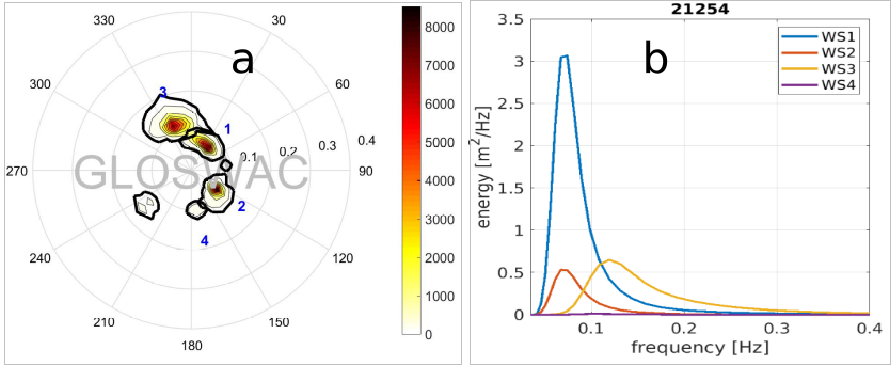Wave Spectral Analysis for designing Wave Energy Converters
DOI:
https://doi.org/10.36688/ewtec-2023-175Keywords:
wave spectral analysis, galapagos islands, wave energy converterAbstract
When designing a Wave Energy Converter (WEC) it is inappropriate to consider overall bulk parameters, like for instance, the typical scatter diagrams Hs-Tp. The reason is that in most of the world wave conditions are complex and involve several long-term wave systems, each with different characteristics (Fig. 1a). This is true even for apparently simple basins like the Mediterranean or the North Sea, in the open ocean this is certainly the case with swells arriving from remote places. Naturally, each Wave System (WS) has different characteristics, like their seasonal variability, typical wave height, but most importantly, the wave period and the spectral width are fundamental design parameters. As WECs must resonate on the exciting force to effectively convert energy, that resonance depends on the wave period. On the other hand, the spectral width indicates how disperse is energy in frequency and direction, the broader the spectrum (more entropy) the more difficult to tap its energy. Therefore, a smart WEC’s design cannot aim to the full spectrum, but to the particular WS with the more favorable characteristics (high energy, narrow spectral band, low frequency). For the present application we focus on a site in the Galapagos Islands. Apart from the aforementioned spectral conditions, this tropical site offers a couple of additional advantages, namely a small seasonal variability, and the absence of high extremes (to be withstood by the device even if idle), with still an interesting average resource (~20 kW/m). At this site we find three main WSs (see Fig. 1, a and b). WS1 belongs to the southerly swells, from the Antarctic extra-tropical storms. WS2 corresponds to swells from the northern hemisphere. WS3 is due to the southern trade-winds, active locally in the area (wind-sea). Clearly, the target for energy conversion is WS1, but for a non-directional device (e.g., point absorber), WS2 is also interesting due to the similar peak frequency. In addition, WS1 and WS2 are seasonally complementary, as they are mainly active in the austral and boreal winters respectively. The identification and separation of these different WSs allows us to determine their characteristics and to obtain specific design parameters. The modulation strategy for the WEC design is the subject of a parallel paper.

Fig. 1. a) (left) Spectral wave conditions in the Galapagos Islands. WS1: Antarctic swells, WS2: northern swells, WS3: southern trade-winds, WS4: Central America wind jets. The colorbar indicates number of occurrences within 1979-2015. b) (right) Average one dimensional spectra for the WSs in panel a. Data obtained from GLOSWAC: https://modemat.epn.edu.ec/nereo/.
Downloads
Published
Issue
Track
Categories
License
Some rights reserved. Please see https://ewtec.org/proceedings/ for more details.

